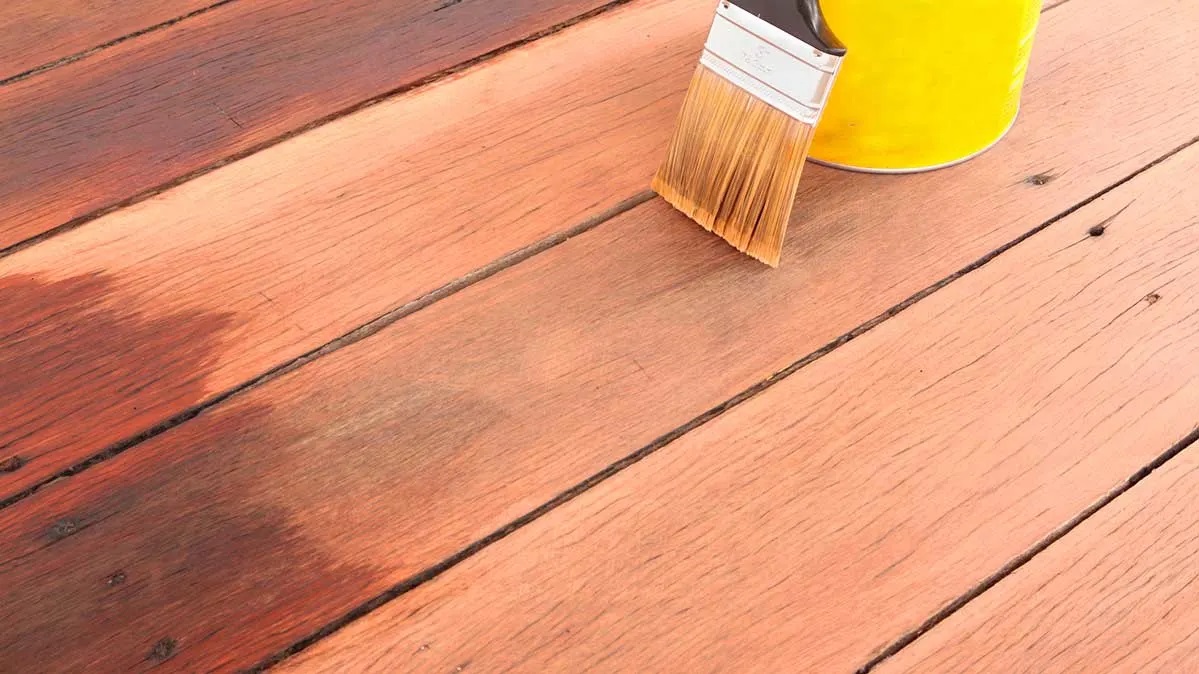Five Expert Tips On Deck Staining

Be sure to inspect the deck thoroughly if there has been snow. After the snow has melted it can have an effect on staining the deck. You should look to see if the current coating is peeling or has peeled off. There may be mold on the deck as well as discoloration. You need a fresh coat if the deck has any of these negative appearances. The wood may deteriorate quickly if you do not apply a fresh coat. Someone who is staining a deck should not skip any important step because it can affect the outcome of the project. The preparation that isn’t adequate could damage the deck and weather that doesn’t permit proper deck staining could also mess up a deck.
If your deck is in a shaded area, it is ok to apply a fresh coat on a cloudy day. You should not apply a stain under direct sunlight. By applying stain to wood in direct sunlight, it can have a huge discoloration effect. Temperatures should be between 10°C (50°F) and 32°C (90°F) for an entire 25 hours. These are ideal temperatures for deck staining. Apply stain when the humidity is between 40 percent and 70 percent. A degree that is higher could affect the time it takes to dey and the gloss. The manufacturer recommends drying times in the conditions: 21°C (70°F) and 40% humidity. Other conditions may vary. If you’re expecting frost, few or rain within a three-day range, then the wood must be very dry. The moisture must not exceed more than 15% and can be checked with a hydrometer.
Your balcony or deck’s surface must be clean. There should not be any grains of sand or stones on the surface. Stains, chips, and dirty areas will need to be fixed before applying a fresh coat of stain to the wood. There is a wide variety of products available including cleaners, strippers, and conditioners. Your local retailer can assist you in making sure you have the proper material needed for a staining project.
A paintbrush is a great tool for applying fresh coatings to your deck. A brush with natural fibers is best for coatings that are oil-based. Be sure to use synthetic (nylon) fibers for acrylic coatings. Go over the edges of the deck with a brush if you are using a roller to stain. This ensures the coating has permeated correctly.
If you’re able to, coat all of the wood surfaces including the end grain. The wood fibers can separate if the end grain absorbs moisture. This can cause an issue with coating.
If you stain the wood in the same direction of the grain one board at a time you will reduce streaking.
Let the coat sit for at least 48 hours before you or anyone else walks on the surface. Allow 30 days minimum before washing the deck to allow the stain to fully harden. If you apply a deck sealer with a, it gives you the best control for an even application and will help you get the sealer in between the boards as well.
Rolling on the deck sealer with a paint roller saves time, although you will not have as much control. You will also have to go over it a couple of times to be sure it has been applied to every part of the surface. The sealant can also be applied by using a garden sprayer. A garden sealer helps by keeping the area clean and it gets the job done quickly. Take your time when applying the stain.








